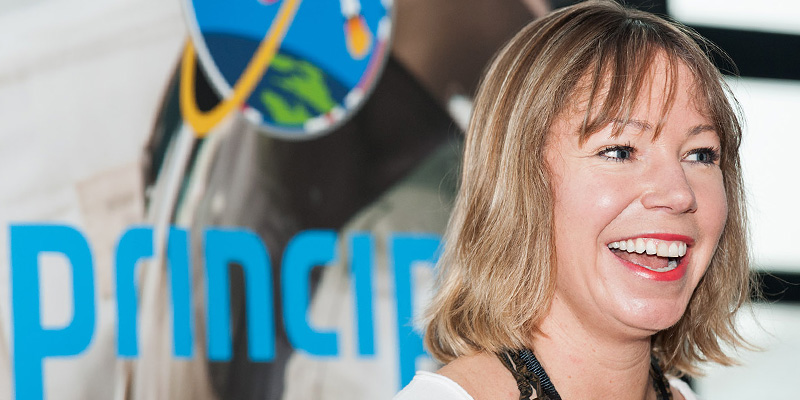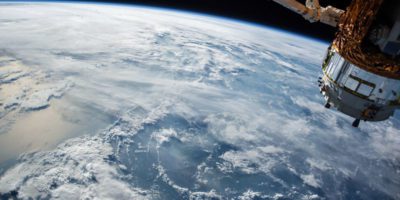Dr. Alice Bunn is policy director at the UK Space Agency, having joined in 2011 as Assistant Director, Earth Observation until she was appointed to her current role on a job share basis in May 2014. The director’s primary responsibility is to provide policy advice on civil space activities to the Minister for Universities and Science (and other ministers as required) in addition to leading on security and international communications.

“…Behind each astronaut are thousands of other jobs contributing to mission success, and aside from every manned mission there are hundreds of other missions like satellite missions, enabling critical communications or environmental monitoring which are equally rewarding as careers…”
Catching the space bug … eventually
I have a Ph.D. in metallurgy and actually had an experiment flown in space during my research, but that wasn’t enough to make me catch the space bug. I then worked in science communication, developing exhibitions and promoting STEM, largely at the Science Museum and including a stint redesigning the space gallery, still not quite enough to make me catch the space bug.
Then I worked for the Natural Environment Research Council in funding of environmental research using space and I was completely blown away by the power of space and the fact that it offers this incredible, global vantage point from which you can study environmental phenomena that could not be studied in any other way, such as in climate research.
I had no idea that space could be so entwined in our everyday life. I found the inspirational effect of space very powerful, but rockets and astronauts are pretty well known to the general public. I had no idea that it so completely underpinned modern life from weather forecasting, to communications to transport – you name it. I continue to feel very inspired by how space is contributing so positively to so many aspects of modern life in developed and developing countries.
Collaboration for the nation
On a day to bay basis my role involves a lot of collaboration – nationally with users of space programmes, especially in industry, academia and other Government departments. There’s also a lot of working with colleagues across Whitehall to ensure that our nationally-licensed missions are safe and don’t represent any threat to the safety of the space operating environment which we all have to share.
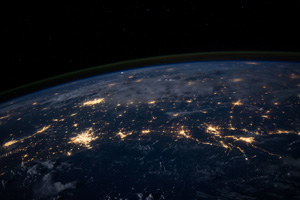
Given that the space environment is shared by all nations, there’s a lot of international cooperation involved in my role to try and bring about best practice in operations and ensure we can continue to rely on space while there are an ever-increasing number of missions.
Revolutionisation of space travel
Space travel is being revolutionised by some new entrepreneurs, notably today in the US. Their approach is very different to the ‘classic’ approach taken by governments, especially where it concerns things like risk appetite and speed of decision-making.
I think there is room for both approaches but their difference means that invariably they will be looking at different markets, for instance one might serve space tourism, the other more focussed on furthering our understanding of the universe. It’s a very exciting time for space travel right now.
Links between physics, maths and space
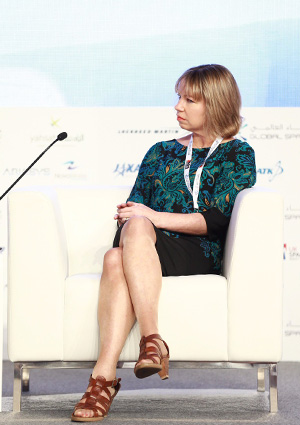
There is very little in space missions which does not ultimately rely on a good grounding in maths and physics, but if you look at the wider ecosystem there are many jobs which will not require maths or physics, such as on legal considerations around space programmes.
Roles on offer in the space industry
The range of roles is vast – you could be a material scientists trying to get the best strength to weight ratio out of the next space capsule, all the time ensuring that it has that critical ability to withstand heat of re-entry.
You could be the engineer trying to design the next evolution in heat exchange which will enable you to get that extra thrust from the engine you are working on. Or increasingly you could be the person with the data handling skills needed to get the right throughput and analysis of some of the vast, vast volumes of data that are coming through our communications or environmental monitoring programmes.
And it goes without saying … if it’s a job for the boys, it’s a job for the girls too!
The Helen Sharman / Tim Peake effect
Role models are important and we need to keep showing girls that it is possible to have a career in space, part of that is shining a light on the breadth of employment opportunities that there are in space. Both Helen Sharman and Tim Peake have been incredible ambassadors for space, and through their high-profile positions as astronauts we need to explain that there are many other ways to have a successful fulfilled career in space.
Behind each astronaut are thousands of other jobs contributing to mission success, and aside from every manned mission there are hundreds of other missions like satellite missions, enabling critical communications or environmental monitoring which are equally rewarding as careers.
Flexibility: Not just a gender issue
The gender balance early career is not too bad, where you start to see a real gap opening up is in mid to senior roles in the sector. I think this is largely as women leave to start a family it can be difficult to get back into roles where promotion opportunities are still there.
This is improving as more flexible working conditions are introduced, to enable part-time working for instance, and the UK is pretty good in this respect but we still have a way to go. And actually, I think more flexible working across the sector would really benefit all, not just mothers returning to work, it’s not necessarily a gender issue at all.
In the space sector, we need to be constantly innovating, and capitalising on developments in other sectors, such as around data handling for instance, but we also need engineers with experience and that is where part-time working can be a great way to continue to keep experience in the sector beyond typical retirements ages, for example.
International cooperation is key
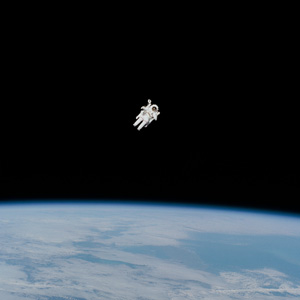
https://www.gov.uk/government/organisations/uk-space-agency
https://twitter.com/spacegovuk
https://en-gb.facebook.com/spacegovuk/

